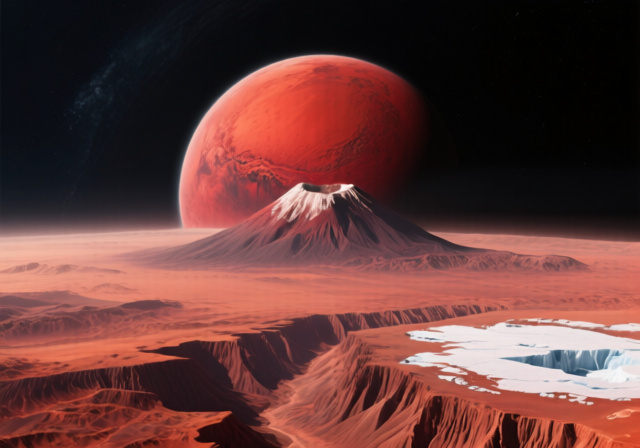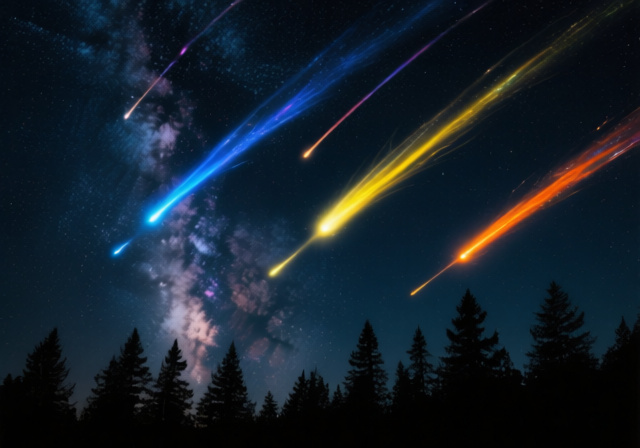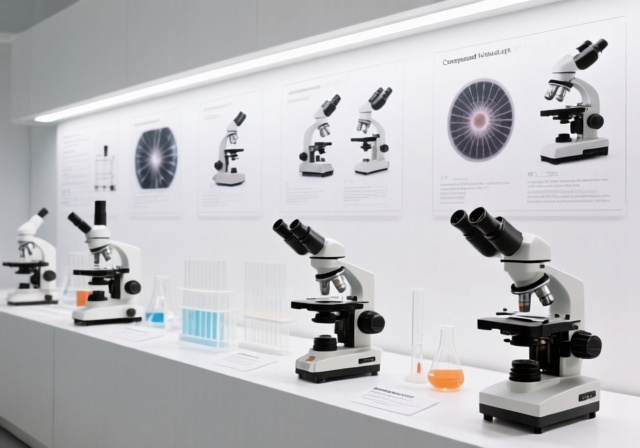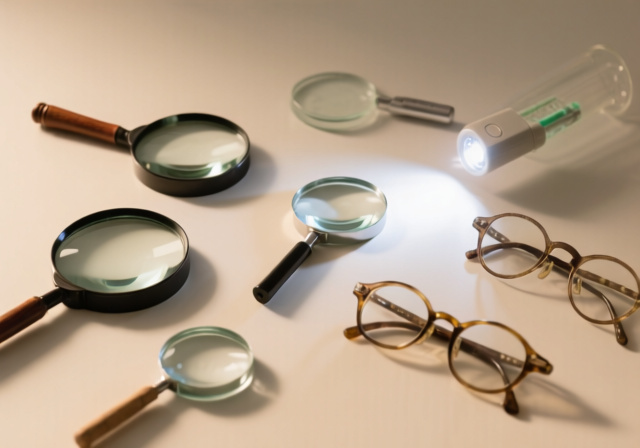

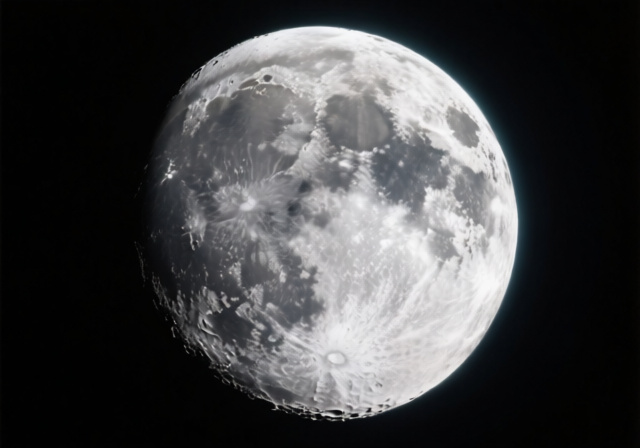

As a photographer, I’ve always been captivated by the Moon’s mysterious presence in our night sky. Whether you’re trying to capture that perfect full moon shot or simply want to understand our celestial companion better, these moon facts will forever change how you see this seemingly familiar object.
The Moon is Earth’s only natural satellite, a rocky body formed 4.5 billion years ago that has shaped our planet’s history in ways we’re still discovering. After spending countless nights photographing lunar landscapes, I’ve learned that understanding the Moon’s characteristics is crucial for capturing its beauty through your lens.
In this comprehensive guide, you’ll discover 30+ fascinating moon facts, learn why our Moon behaves the way it does, and master the art of moon photography with practical tips you won’t find in typical astronomy guides. Ready to explore our nearest cosmic neighbor?
Photographing stars and capturing the Moon require different techniques, and understanding lunar facts is your first step toward stunning night sky photography.
Quick Summary: The Moon is drifting away, has water, experiences long moonquakes, and creates both ocean and rock tides on Earth. Its surface preserves footprints for millions of years due to lack of atmosphere.
Understanding these key measurements helps plan your moon photography sessions and choose the right equipment. These facts aren’t just trivia – they directly impact how you capture lunar images.
| Property | Moon | Earth | Photography Impact |
|---|---|---|---|
| Diameter | 3,474 km | 12,742 km | Appears 0.5° in sky – same as thumbnail at arm’s length |
| Distance from Earth | 384,400 km avg | – | Requires telephoto lens (200mm+ for detailed shots) |
| Gravity | 1.62 m/s² | 9.8 m/s² | Explains slow-falling lunar dust in videos |
| Orbital Period | 27.3 days | – | Determines phase cycle for planning shoots |
| Rotation Period | 27.3 days | 24 hours | Creates tidal locking – same face always visible |
| Surface Temperature | -208°F to 243°F | -88°F to 58°F | Extremes affect equipment during lunar missions |
| Age | 4.5 billion years | 4.5 billion years | Same age, formed from same materials |
The Giant Impact Hypothesis explains our Moon’s origin through a cataclysmic collision that occurred 4.5 billion years ago. A Mars-sized object named Theia slammed into early Earth, ejecting massive amounts of debris into orbit.
This debris gradually coalesced through gravitational attraction, forming the Moon we know today. This violent birth explains why the Moon has less iron than Earth and shares similar oxygen isotope ratios – it’s essentially made of Earth material mixed with Theia’s remnants.
For photographers, this cosmic collision created the perfect canvas. The Moon’s varied surface – from smooth maria to cratered highlands – offers endless compositional opportunities. Understanding its formation story adds depth to your lunar photography, turning each crater capture into a glimpse of our solar system’s violent past.
The lunar surface tells a 4.5-billion-year story through its diverse features. The dark patches you see, called lunar maria (Latin for “seas”), are actually ancient volcanic plains formed by basaltic lava flows billions of years ago. Despite their smooth appearance from Earth, these plains contain fascinating details perfect for telephoto photography.
The bright, heavily cratered regions are called highlands or terrae. These areas contain the Moon’s oldest crust and feature some of the most photogenic craters. Tycho Crater, with its prominent ray system stretching 1,500 kilometers, creates stunning contrast during full moon.
The entire lunar surface is covered in regolith – a layer of fine dust and rocky fragments created by billions of years of meteorite impacts. This powder-like substance, 2-15 meters deep in most places, gives the Moon its soft appearance in photographs and famously preserves astronaut footprints.
Synchronous rotation is perhaps the Moon’s most fascinating characteristic. The Moon rotates on its axis at exactly the same rate it orbits Earth, taking 27.3 days for both. This perfect timing means the same lunar hemisphere always faces our planet.
This phenomenon, called tidal locking, occurred because Earth’s gravity created tidal bulges on the Moon. Over millions of years, Earth’s gravity slowed the Moon’s rotation until it matched its orbital period. The same effect is happening to Earth, but it would take billions of years for us to become tidally locked to the Moon.
Photographers can actually capture about 59% of the lunar surface over time due to libration – the Moon’s slight wobbling motion. This north-south and east-west oscillation reveals edges of the far side throughout the month, creating unique photography opportunities during each lunar cycle.
Between 1969 and 1972, NASA’s Apollo missions successfully landed 12 astronauts on the Moon. Neil Armstrong’s “one small step” on July 20, 1969, marked humanity’s first lunar surface visit. These missions brought back 842 pounds (382 kg) of lunar samples, revolutionizing our understanding of planetary formation.
The last human to walk on the Moon was Gene Cernan in December 1972. Since then, no person has returned, but that’s changing. NASA’s Artemis program aims to land astronauts near the lunar south pole by 2025, including the first woman and first person of color.
Recent discoveries continue to transform our understanding. The 2020 SOFIA mission confirmed water molecules in sunlit lunar areas, while India’s Chandrayaan missions have mapped water ice deposits in permanently shadowed craters. These findings are crucial for future lunar bases and open new possibilities for lunar photography from different locations.
Photographing the Moon combines technical precision with artistic vision. After years of trial and error, I’ve learned that lunar photography rewards patience and preparation. The Moon’s brightness fools camera meters, often resulting in overexposed shots unless you manually adjust settings.
Your gear choices significantly impact lunar photography results. While you can capture decent moon shots with basic equipment, specialized tools elevate your results dramatically. I’ve tested everything from smartphone setups to professional telescopes, and here’s what actually matters.
A DSLR or mirrorless camera with manual mode is non-negotiable for serious moon photography. Full-frame sensors handle the Moon’s extreme brightness better than crop sensors, but modern APS-C cameras produce excellent results with proper settings. Pair your camera with at least a 200mm telephoto lens – I recommend 400mm+ for detailed crater photography.
Stability is crucial. Even the slightest vibration turns crater edges into blurry mush. A sturdy tripod with a gimbal head supports heavy telephoto setups. For tracking the Moon’s movement across the sky, consider an equatorial mount or star tracker – especially during eclipses or when photographing lunar details.
✅ Pro Tip: Use a remote shutter or 2-second timer to eliminate camera shake. Even pressing the shutter button can introduce vibration that softens your lunar images.
Telescope filters for lunar viewing dramatically improve contrast and reduce glare. A neutral density filter prevents overexposure, while a moon filter enhances subtle surface details. These filters screw into your eyepiece or camera adapter and are essential accessories for serious lunar photographers.
Different moon phases require different approaches. Full moon photography demands fast shutter speeds (1/125s or faster) to avoid blown-out highlights. During crescent phases, you can use slower shutter speeds (1/30s to 1/60s) to capture Earthshine – the faint illumination of the dark side.
ISO settings should stay as low as possible (100-400) to maintain image quality. Aperture varies by lens, but f/8 to f/11 typically provides the sharpest results. Shoot in RAW format to preserve maximum detail for post-processing.
For exposure, use the “Sunny 16” rule as a starting point – the Moon is essentially sunlit rock. Begin with ISO 100, 1/125s at f/11, then adjust based on results. During eclipses, increase exposure by 2-3 stops for the partial phases and up to 8 stops during totality.
Successful moon photography requires planning beyond checking weather. I use apps like PhotoPills to track moonrise times and plan compositions. The Moon appears largest near the horizon due to the moon illusion – perfect for creative landscape compositions.
Consider the lunar cycle when planning shoots. Full moons offer dramatic lighting but hide crater details in harsh shadows. First and third quarter moons reveal the most surface texture through side-lighting that creates depth and contrast in craters.
Binoculars vs telescope for moon viewing depends on your goals. Binoculars offer portability and wide-field views of moon landscapes, while telescopes provide magnification for detailed crater photography. Many astrophotographers start with binoculars before investing in telescope systems.
Location scouting matters too. Find areas with clear views of the eastern or western horizon for moonrise/moonset shots. Urban environments offer creative opportunities – I’ve captured stunning moon photos behind city skylines, bridges, and landmarks that add context to lunar images.
⏰ Time Saver: The best moon photography occurs during the “golden hours” of moonrise and moonset. The Moon appears larger and warmer near the horizon, creating dramatic lighting conditions.
Best telescope types for moon photography include both reflectors and refractors. Refractors provide sharp contrast for lunar details, while reflectors offer larger apertures for collecting more light. Choose based on your budget and portability needs – many lunar photographers prefer apochromatic refractors for their crisp image quality.
For beginners wondering about equipment costs, budget telescopes for moon viewing can produce surprisingly good results. While premium optics provide better contrast and sharpness, you don’t need to spend thousands to capture impressive moon photos. Start with what you can afford and upgrade as your skills develop.
The Moon is 238,855 miles from Earth, drifting away 3.8cm yearly. It formed 4.5 billion years ago from a giant impact. Only 12 people have walked on it. The Moon has water, experiences moonquakes lasting hours, creates both ocean and rock tides, and preserves footprints for millions of years due to no atmosphere.
The Moon consists of a small iron core (1-2% of mass), rocky mantle, and crust rich in oxygen, silicon, aluminum, iron, calcium, and magnesium. Surface regolith contains glass beads from micrometeorite impacts and water molecules in permanently shadowed craters.
Without the Moon, Earth would wobble dramatically on its axis, causing extreme climate changes. Days would shorten to 6-8 hours. Ocean tides would reduce by 75%. Many species’ migration and reproduction cycles would fail, potentially causing ecosystem collapse.
The Moon’s official name is Luna, from Latin. We call it “the Moon” from Old English “mōna”. Other cultures have different names: Selene (Greek), Tsuki (Japanese), Chandra (Sanskrit). The International Astronomical Union recognizes both Luna and Moon as official names.
The Moon illusion makes the Moon appear larger near the horizon. This optical trick occurs because we compare it to familiar objects. The Moon’s actual size varies 14% due to its elliptical orbit – appearing larger at perigee (closest) and smaller at apogee (farthest).
Yes, all six Apollo landing sites still preserve astronaut footprints and rover tracks. With no atmosphere, wind, or water, these marks could last 10 million years. The Lunar Reconnaissance Orbiter has photographed all landing sites, clearly showing equipment and paths left by astronauts.
Eugene Shoemaker, the geologist who proved impact craters were formed by meteorites, is buried on the Moon. His ashes were carried by Lunar Prospector in 1998, making him the only human remains on another celestial body. His final resting place is near the lunar south pole.
The Moon has active geology! In 2018, scientists discovered the Moon is shrinking as its interior cools, causing “moonquakes” as it contracts. These thrust faults are still active today, proving our Moon isn’t a dead world but geologically alive.
After years of photographing landscapes and portraits, discovering moon photography opened a whole new dimension in my creative journey. The Moon combines technical challenges with artistic rewards, pushing you to master your equipment while capturing something truly otherworldly.
These moon facts aren’t just trivia – they’re practical knowledge that will improve your lunar photography. Understanding the Moon’s distance tells you why telephoto lenses are essential. Knowing about synchronous rotation helps you plan compositions. Realizing the Moon’s true darkness explains why proper exposure is crucial.
Start with the equipment you have, learn the basics, and gradually build your lunar photography toolkit. Whether you’re capturing crater details with a 600mm telephoto or creating artistic moonrise silhouettes with a wide-angle lens, the Moon offers endless possibilities for creative expression.
The next full moon, clear your calendar, grab your camera, and look up. Our 4.5-billion-year-old companion is waiting – and now you know exactly how to capture its beauty in ways that honor its fascinating nature.
Synchronous Rotation: The Moon’s rotation period exactly matches its orbital period (27.3 days), causing the same hemisphere to always face Earth. This phenomenon results from Earth’s gravitational influence creating tidal bulges that gradually slowed the Moon’s rotation until it synchronized with its orbit.


